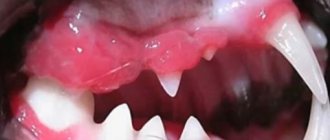If a cat has a cracked nose, it may be a symptom of traumatic injury, a fungal infection, a consequence of age-related changes, allergies, worm infestation, diabetes mellitus, or a lack of vitamin A. If a crack appears on the nose, the owner should take the pet to a veterinarian, who will determine the cause and prescribe treatment.
According to veterinarian statistics, 1% of skin diseases in cats have an allergic etiology.
The danger of cat bites and scratches for humans
In nature, there are diseases that are equally dangerous for people and animals. They are provoked by a variety of infections and parasites that are brought to people by domestic cats or stray yard animals. People's love for pets does not become a barrier against blood poisoning, tetanus, rabies, and lichen. The list of serious diseases that can be contracted from their bites and scratches includes toxoplasmosis, salmonellosis, giardiasis, roundworms, scabies, chlamydia, felinosis, etc.
Domestic cats' claws are long and sharp
Bites from sharp and thin cat teeth, deep scratches from claws never remain without negative consequences. It would seem that a cat scratched, many people think that if it is domestic, it is not scary, but as a result, puncture and lacerated deep wounds are formed. They get dirt, animal saliva, filled with pathogens that cause infections in more than half of the attacks. Dangerous microorganisms, which are found in 90% of domestic cats, enter the lower layers of the epidermis and cause suppuration with complications, including septic manifestations.
Most often, cats damage the skin on their hands. If bites and scratches are deep, tendons, muscles, joints, nerve fibers, veins and blood capillaries may become damaged and become inflamed. Moving through the bloodstream, pathogens are able to reach the heart, liver, spleen, lungs, and brain. Of all the infections that animals, especially homeless animals, can infect people with, the most dangerous and deadly is rabies. This disease was described by doctors alive 3 thousand years BC. It has not yet been eradicated, which is why you need to be especially careful when handling animals.
Important! Vaccination of domestic dogs and cats against rabies is a mandatory procedure in Russia.
Traces of cat bites and scratches
Should I worry?
Nosebleeds are an alarming symptom, but you should not panic. The animal needs to be calmed to reduce its blood pressure, which rises when overexcited.
Isolated cases and constant phenomena
If bleeding occurs regularly in an animal, this is a reason to urgently consult a veterinarian. It is important to find out whether the condition is accompanied by other problems: internal bleeding, lethargy, black stool.
In isolated cases, an animal's nose may bleed after playing with another pet or receiving injuries. Poisoning with rat poison is also accompanied by bleeding.
It is important to keep all chemicals in closed cabinets.
First aid
Before the doctor arrives or goes to the clinic, it is necessary to stop the bleeding at home.
The animal is calmed down, an ice pack is placed on the bridge of the nose, after wrapping it in a towel. Such a bundle should not make it difficult for your pet to breathe. Under the influence of low temperatures, blood vessels narrow and bleeding stops.
When is veterinary help needed?
If the owner cannot stop the bleeding using available methods, it is necessary to contact a veterinary clinic.
Regularly recurring bleeding should not be ignored. In this case, the help of a specialist is needed.
What can you get infected from cat scratches?
Domestic vaccinated cats cannot infect humans with rabies through a shallow scratch. If the animal is sick with rabies, if it was scratched by a street cat, then even a small damage to the skin can become a gateway for the animal’s saliva to get into the wound. After all, in a sick animal, saliva filled with pathogens flows from the mouth, contaminating the fur, paws, and claws.
How to help a cat in the heat: examples of what you can do
Cats become carriers of streptococcal, staphylococcal infections, bacteria of the genus Pasteurella. Certain representatives of the genus Pasteurella provoke cholera in domestic chickens; the species Pasteurella pestis is the causative agent of plague in rats. From them they can get to rat-catching cats, and then to humans.
There is, albeit a small, chance of HIV infection due to a cat scratch. This can happen during communication between a healthy and a sick person, who at the same time were scratched until they bled by an animal. Feline AIDS is not transmitted to humans.
For some people scratched by cats, infection with Bartonella bacteria also becomes dangerous.
Important! Any home first aid kit should contain ointments for cat scratches in case of situations of injury to people when playing with animals or unexpected attacks by cats.
Homeless rat-catcher cat
Why does pathology occur?
Fungal infection
Mycoses around the nose are provoked by trichophyton, microsporum or Candida yeast. It manifests itself mainly due to a decrease in local or general immunity. This is facilitated by frequent bathing of the pet, abuse of hygiene products, and frequent colds. Cats can also become infected from sick animals. Symptoms:
- itching;
- hair loss around the nose or throughout the body;
- formation of scales or crusts;
- skin redness;
- formation of cracks;
- general deterioration of condition.
Skin parasites
This symptom is typical for animals whose faces are inhabited by such parasites.
Often the cause of dermatitis on the face is fleas, lice eaters, notoedrosis or ear mites, the waste products of which irritate the skin around the nose. Infection occurs through contact with infected animals. The first symptoms appear on the body - the neck, behind the ears in the form of bald spots and severe itching. Then the disease spreads to the muzzle and manifests itself as follows:
- the appearance of erosions or ulcers near the nasal mirror;
- redness of the skin;
- hair loss;
- formation of a black stripe along the edge of the nose.
Allergic reaction
The skin on a cat's nose is one of the most sensitive places on the animal's body. Therefore, it quickly reacts to allergenic agents. These include:
- food and vitamin supplements;
- components of veterinary preparations;
- dust;
- household chemicals;
- plant pollen;
- fresh fish and some seafood;
- chicken eggs;
- dairy products;
- pork meat.
A sign of an allergen affecting your pet’s body may be the appearance of discharge from the organs of vision.
A kitten's nose may peel off due to stuck food particles that irritate the skin, since the baby does not yet know how to fully wash himself. In addition to nasal peeling, allergies manifest themselves as follows:
- clear discharge from the eyes and nostrils;
- skin hyperemia;
- hair loss;
- itching - moderate to severe;
- the formation of wounds, crusts or erosions at the site of scratching.
Traumatic injuries
If your cat's nose peels off, it may be the result of a blow or scratch. Due to the bruise, the normal blood supply to the hair follicle and the upper layers of the epidermis is disrupted. However, minor injuries pass without causing harm. In hairless cats - Sphynx, Levkoy, Bambino, the nose can peel off due to exposure to ultraviolet rays if the owner leaves the pet in the sun for a long time.
How to quickly and effectively heal scratches and bites
Pharmacists suggest using ointments, liquid preparations, and powders to treat the skin of animals affected by the teeth and claws of animals, and for the formation of deep and lacerated wounds. The choice of ointments for cat scratches is quite extensive.
Can cats have milk - examples for newborns and kittens
There will be no problems with how to treat cat scratches if you have the medications described below in your home medicine cabinet.
Miramistin
This is a drug in which the main active ingredient is myristic acid. It is prescribed as a preventive and therapeutic agent for suppuration of wounds. The drug is considered one of the most effective antiseptics. By using it, the use of antibiotics can be avoided. The product is hypoallergenic, therefore, if a cat scratches a child, do not hesitate what to do, and after washing the wound, use Miramistin.
Emu Fat
This ostrich oil, made from the fat of the Australian flightless bird emu, has powerful anti-inflammatory properties and quickly heals skin lesions. It has an optimal combination of three types of omega acids, allowing the components of the drug to act as effectively as Ibuprofen tablets, a well-known analgesic and anti-inflammatory drug.
Important! Emu oil, combined with colloidal silver, used alternately, heals shallow wounds without leaving scars.
Levomekol ointment
The product contains an antimicrobial complex. Thanks to the polyethylene glycol agent included in the drug, which binds the liquid accumulating in the wound, penetrates into the deep layers of damaged tissue and cleanses wounds with purulent contents.
Ointment Rescuer
This product accelerates wound healing processes, creates a protective barrier on the surface of the skin, relieves pain, prevents intoxication and the development of infections.
Solcoseryl
The drug is produced in the form of a jelly, which is applied to wet wounds. And also in the form of an ointment, which is used to treat dry wounds. Solcoseryl promotes the regeneration of skin tissue, cat scratches heal without a trace.
Actovegin
This ointment stimulates the healing processes of wound holes and scratches. Suitable for use during pregnancy and breastfeeding.
Note! Self-treatment may not always be effective. After the first treatment of skin lesions with antiseptics, an urgent consultation with your doctor or traumatologist is required.
Spread of infection from the bite site through the lymph vessels
What to do if your cat has a cracked nose?
The cause and treatment plan are determined by the veterinarian; self-medication is prohibited. In case of vitamin deficiency, a diet of high-quality holistic food or premium brands is prescribed. Vitamin and mineral complexes “Zeosorb”, “Gras Bits”, “Vitacraft Vita-Bon” are also recommended. For helminths, antihelminthic drugs Pratel, Bayer Profender Spot-On, Cestal, and Prazicide are effective. The progression of diabetes mellitus will be stopped by insulin injections and daily monitoring of the cat's glucose levels. In case of allergies, the cause that caused the reaction should be eliminated. Fungal diseases are treated with antifungal drugs and pet shampoos based on ketoconazole or miconazole. Traumatic wounds and cracks in the nose can be lubricated with Levomekol liniment. Elderly pets should purchase specialized food marked Senior.
First aid for bites and scratches at home
How to make cats friends with each other in an apartment: examples of how to reconcile
The main condition for the absence of complications and serious consequences after contact with an aggressive animal is not solving problems - cat scratches appeared, what to treat, what to anoint - but quick first aid, and then a visit to specialists.
Before starting to help the victim, the person who will provide first aid should thoroughly wash their hands and wear sterile gloves. It is necessary to wash the skin around the wound with water and laundry soap or treat it with 3% hydrogen peroxide - the faster cat saliva and dirt from the claws are removed from the wounds, the pathogens will have less chance of penetrating deeply into the human body.
Primary treatment of scratches
Instead of peroxide, you can use any alcohol-free liquid antiseptic - an aqueous solution of furatsilin, a weak solution of potassium permanganate. Moisten a gauze pad or piece of gauze with the product. First, remove dirt and dried blood from the edges of the wounds, and then wash the wound. This is the only way the infection will not be able to re-enter the wound from the surface of the skin.
Important! Damaged skin should not be treated with cotton wool or paper napkins so that their particles cannot get into the wound.
When severe consequences occur from cat bites and scratches
The degree of danger of cat bites depends on the depth of damage to soft tissues and the infection that enters the wounds from the claws and teeth of the predator.
Any cats, not only homeless ones or those living on personal plots and spending most of their time outside their homes, while on the street rummage in the sand and earth, chase and kill rodents, birds, large insects, and dig in garbage heaps. In this case, many pathogenic microorganisms are obtained that stick to their fur, claws and teeth, penetrate inside the cat’s body, and then are transferred to the wounds of people, causing suppuration and illness of varying degrees of severity.
People who suffered from animal attacks, who did not hesitate what to do if they were scratched by a cat, and immediately after providing first aid sought a professional examination, most likely avoided surgical interventions and long-term hospitalization, taking antibiotics, dressings, and rough scars from festering wounds. All this can happen if terrible diseases that beloved pets, like stray animals, can infect people with are not diagnosed in time.
Rabies and tetanus
The first and second places in terms of danger are shared by rabies and tetanus. Most people know about these diseases in some detail. They understand that if, after wounds received from unknown animals, one does not seek preventive vaccinations and vaccinations, then life can end in terrible pain and suffering.
Additional Information! Cats that often scratch people can wear silicone anti-scratch pads on their claws.
Felinosis
There is another little-known disease that does not cause death, but causes a lot of pain. It occurs after an animal violates the integrity of a person’s skin with its dirty claws. It is called “Cat Scratch Disease”, or Felinosis, and is determined only by the results of clinical examinations. The source of the disease is the Bartonella bacterium, which lives in the cat’s body, but does not cause harm to it.
Bartonella bacterium and signs of felinosis
But in people whose blood felinosis pathogens have entered, the lymph nodes become inflamed, rot, the temperature rises, and the sick feel severe ailments and weakness. Internal organs may be damaged - liver, kidneys, spleen, eyes, nervous system; rashes and painful swellings of the skin over the inflamed lymph nodes may appear on the skin.
This disease is treated with antibiotics, and sometimes goes away without complications. The treatment period is long - from 3 to 6 months. During this period, the scratches through which the infection entered the human body will heal, and the person will continue to suffer.
Help an animal
Treatment for bleeding depends on the test result. If an animal is diagnosed with an infectious disease, a course of antibiotics is prescribed; for fungal infections, fungicidal drugs are prescribed.
If you have high blood pressure (hypertension), appropriate medications are prescribed to lower it.
Complex injuries, deformation of the nasal passages, and neoplasms are treated only surgically. A deeply stuck foreign object is removed with surgical instruments using anesthesia.
In case of poisoning with rat poison or hemophilia, vitamin K is indicated. Vasoconstrictor drugs and Adrenaline are injected into the nasal cavity.
For nosebleeds, symptomatic treatment and the use of drugs that promote blood clotting are indicated.
Traditional methods
If parasites are the cause of your pet's nosebleeds, they need to be removed. A decoction of tansy helps against fleas. It is used to rinse the animal's fur after bathing. In other cases, folk remedies are powerless.
At home, stop bleeding by applying cold to the back of the cat's nose. It is impossible to treat a pathology without knowing the cause. Wrong actions of the owner can cause the development of irreversible consequences.
The animal needs specialist consultation, a complete and comprehensive examination, and complex therapy.










